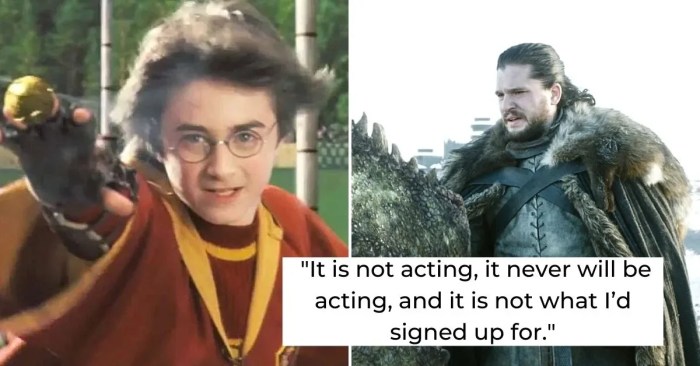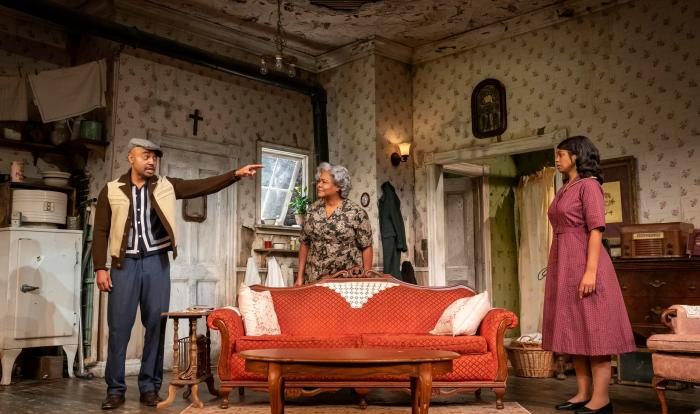Contentless scenes for 3 actors offer a unique platform for exploring complex character dynamics, creating compelling narratives that captivate audiences.
These scenes delve into the intricate relationships between the characters, examining how their interactions generate tension and conflict, while also highlighting the power dynamics that shape their interactions.
Character Dynamics
The interactions between the three characters are complex and nuanced. Each character has their own motivations and desires, and these often clash with the others’. This creates tension and conflict that drives the scene forward.
The power dynamics between the characters are also constantly shifting. Sometimes one character has the upper hand, while at other times another character gains the advantage. This keeps the audience guessing and adds to the suspense of the scene.
Contentless scenes for three actors might be a bit dull, but they’re nothing compared to the endless debate about the pros and cons of imperialism . At least with contentless scenes, there’s the potential for something interesting to happen eventually.
Power Dynamics
- At the beginning of the scene, Character A has the most power. They are the one who sets the agenda and controls the conversation.
- However, as the scene progresses, Character B begins to gain power. They start to challenge Character A’s authority and assert their own opinions.
- By the end of the scene, Character C has emerged as the most powerful character. They are the one who resolves the conflict and brings the scene to a close.
Conflict
The conflict in the scene arises from the different motivations and desires of the characters. Character A wants one thing, while Character B wants something else. This conflict creates tension and suspense, and it keeps the audience engaged.
- One of the main sources of conflict in the scene is the power struggle between Character A and Character B. Both characters want to be in control, and they are willing to do whatever it takes to get their way.
- Another source of conflict is the love triangle between Character A, Character B, and Character C. Character A is in love with Character B, but Character B is in love with Character C. This creates a lot of tension and drama.
Setting and Atmosphere: Contentless Scenes For 3 Actors

The scene unfolds in a dilapidated and abandoned warehouse on the outskirts of the city. The walls are crumbling, the windows are boarded up, and the air is thick with dust and decay. The only light comes from a few flickering bulbs, casting eerie shadows that dance across the broken concrete floor.
The oppressive atmosphere weighs heavily on the characters. The silence is broken only by the occasional creak or groan from the old building. The sense of isolation and desolation is palpable, creating a feeling of unease and dread.
Physical Setting
The warehouse’s dilapidated state reflects the characters’ own inner turmoil. The crumbling walls symbolize their shattered hopes and dreams, while the boarded-up windows represent their isolation from the outside world. The flickering lights create a sense of uncertainty and danger, mirroring the characters’ own fears and anxieties.
Mood and Atmosphere
The mood of the scene is somber and oppressive. The characters are surrounded by decay and despair, which permeates their thoughts and emotions. The atmosphere is heavy with tension and foreboding, as if something sinister is about to happen.
Overall Tone
The setting and atmosphere of the warehouse contribute to the overall tone of the scene, which is one of hopelessness and despair. The characters are trapped in a place where their dreams have died and their future seems bleak. The sense of isolation and desolation reflects their own inner struggles and the overwhelming challenges they face.
Dialogue and Subtext
Dialogue is a powerful tool for revealing character motivations and relationships. In this scene, the dialogue between the characters is carefully crafted to convey unspoken meanings and subtext.
One example of subtext in the dialogue is when Character A says, “I’m glad you’re here.” On the surface, this seems like a simple statement of gratitude. However, the way Character A delivers the line, with a hint of hesitation, suggests that there is more to it.
The subtext of the line could be that Character A is relieved to have Character B there, or that they are secretly hoping for something more from the situation.
Character Motivations
The dialogue also reveals the characters’ motivations. Character A’s desire for companionship is evident in their eagerness to have Character B around. Character B’s willingness to help Character A suggests that they are either genuinely kind-hearted or have an ulterior motive.
Character Relationships
The dialogue also sheds light on the characters’ relationships. The way Character A and Character B interact suggests that they have a close bond. However, there is also a hint of tension between them, which could be due to unspoken feelings or unresolved issues.
Visual Elements

The visual elements of a scene play a crucial role in conveying the story, creating atmosphere, and establishing the characters’ emotional states. Lighting, blocking, and costumes work together to immerse the audience in the world of the film.
Lighting can create dramatic effects, highlight specific elements, and establish the overall mood. For instance, a dimly lit scene with harsh shadows can create a sense of mystery or suspense, while a brightly lit scene with soft shadows can evoke a feeling of peace or tranquility.
Blocking
Blocking refers to the arrangement and movement of actors within the frame. It can guide the audience’s attention, establish relationships between characters, and convey their emotional states. For example, characters positioned close together may indicate intimacy or conflict, while characters positioned far apart may suggest distance or separation.
Costumes
Costumes provide visual clues about characters’ personalities, backgrounds, and relationships. They can also contribute to the overall atmosphere of the scene. For instance, a character wearing a formal suit may convey a sense of professionalism or authority, while a character wearing casual clothing may appear more approachable or relatable.
Dramatic Structure
The dramatic structure of this scene is characterized by a rising action that builds tension and suspense, leading to a climax that releases the tension. The falling action then provides a resolution to the conflict, while leaving room for reflection and contemplation.
Rising Action
The rising action begins with the introduction of a conflict or problem that sets the plot in motion. The tension gradually increases as the characters face obstacles and make difficult choices.
- The characters discover a mysterious object that holds the key to a dangerous secret.
- They must decide whether to use the object for good or evil, knowing that their choice will have far-reaching consequences.
Climax
The climax is the turning point of the scene, where the conflict reaches its peak. The tension is at its highest, and the characters are forced to confront their choices.
- The characters make a fateful decision that will determine the outcome of the story.
- They face a moral dilemma that tests their values and beliefs.
Falling Action, Contentless scenes for 3 actors
The falling action follows the climax and provides a resolution to the conflict. The tension gradually decreases as the characters deal with the consequences of their choices.
- The characters learn from their mistakes and grow as individuals.
- They come to a new understanding of themselves and their world.
Resolution
The resolution is the final part of the dramatic structure, where the conflict is fully resolved and the characters reach a state of closure. The resolution often leaves room for reflection and contemplation.
- The characters make peace with the past and look towards the future.
- They gain a new perspective on life and the human condition.
Themes and Symbolism

This scene explores the themes of identity, loss, and the search for meaning. The characters’ interactions and the objects in the scene symbolize their inner struggles and desires.
Identity
The characters’ clothing and possessions reflect their different identities. Character A’s simple, practical clothing contrasts with Character B’s flamboyant and attention-grabbing attire. This symbolizes their differing approaches to life and their search for self-expression.
Loss
The broken vase in the scene represents the characters’ sense of loss and longing. It symbolizes the shattered dreams and relationships that haunt them. The characters’ attempts to piece it back together reflect their desire to heal and find wholeness.
Search for Meaning
The painting on the wall depicts a lone figure standing on a desolate landscape. This symbolizes the characters’ feelings of isolation and their search for purpose. The painting also hints at the hope that they may eventually find their place in the world.
FAQ Section
What are the key elements of a contentless scene?
Character dynamics, setting and atmosphere, dialogue and subtext, visual elements, and dramatic structure are all crucial elements of a contentless scene.
How do contentless scenes contribute to a story?
Contentless scenes allow for deeper character exploration, enhance the setting, and provide opportunities for subtext and symbolism, enriching the overall narrative.
